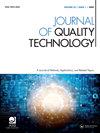涉及商用卡车驾驶员的重复安全关键事件的分层点过程模型:人类行为建模的可靠性框架
IF 2.2
2区 工程技术
Q2 ENGINEERING, INDUSTRIAL
引用次数: 1
摘要
卡车运输行业的质量涉及几个方面,包括准时性能和安全。在迄今为止最大的自然驾驶研究中,有496名司机和13m英里的驾驶,我们解决了两个安全问题:(a)在驾驶换挡期间,安全关键事件的发生是否增加?(b)休息对这些事件发生的影响是什么?为了解决这两个问题,我们采用通常用于评估可修复系统可靠性的点过程模型来模拟安全关键事件的发生/可能性。为了解释驾驶员差异,还假设了驾驶员级别的随机效应。我们的研究结果表明:(a)硬刹车的强度在整个换挡过程中降低,(b)休息时间降低了激活自动碰撞缓解系统的可能性,(c)驾驶员之间存在相当大的可变性。考虑到硬刹车(一种不太严重的安全关键事件)在换挡开始时更常见,这可能是由于驾驶员在本地/城市道路上行驶的可能性增加和/或在驾驶员换挡早期出现攻击性驾驶行为的可能性增加。此外,我们量化了休息休息对减少更严重的自动碰撞缓解系统的影响,为卡车运输安全的休息休息调度的重要性提供了数据驱动的证据。我们还通过模拟研究调查了该方法的特性,其中我们检查了贝叶斯先验规范不正确的后果。本文章由计算机程序翻译,如有差异,请以英文原文为准。
Hierarchical point process models for recurring safety critical events involving commercial truck drivers: A reliability framework for human performance modeling
Abstract Quality in the trucking industry involves several facets, including on-time performance and safety. In the largest naturalistic driving study to-date, with 496 drivers and 13 M miles driven, we address two safety questions: (a) does the occurrence of safety critical events increase during a driving shift? and (b) what is the effect of rest breaks on the incidence of those events? To address these two questions, we adopt point process models, commonly used to assess the reliability of repairable systems, to model the occurrence/likelihood of safety critical events. To account for driver differences, driver-level random effects were also assumed. Our results show that: (a) the intensity for hard brakes decreases throughout a shift, (b) rest breaks reduce the likelihood of activation of the automated collision mitigation system, and (c) there is a fair amount of variability among drivers. Given that a hard brake (a less severe safety critical event) is more common in the beginning of the shift, it can potentially be explained by an increased likelihood of being in a local/city road and/or increased likelihood of aggressive driving behavior early in a driver’s shift. Furthermore, we quantified the impact of rest breaks in reducing engagement of the more severe automated collision mitigation system, providing data-driven evidence on the importance of rest-break scheduling for trucking safety. Properties of the approach were also investigated through a simulation study, where we examined the consequences of an incorrect specification of the Bayesian priors.
求助全文
通过发布文献求助,成功后即可免费获取论文全文。
去求助
来源期刊

Journal of Quality Technology
管理科学-工程:工业
CiteScore
5.20
自引率
4.00%
发文量
23
审稿时长
>12 weeks
期刊介绍:
The objective of Journal of Quality Technology is to contribute to the technical advancement of the field of quality technology by publishing papers that emphasize the practical applicability of new techniques, instructive examples of the operation of existing techniques and results of historical researches. Expository, review, and tutorial papers are also acceptable if they are written in a style suitable for practicing engineers.
Sample our Mathematics & Statistics journals, sign in here to start your FREE access for 14 days
 求助内容:
求助内容: 应助结果提醒方式:
应助结果提醒方式:


